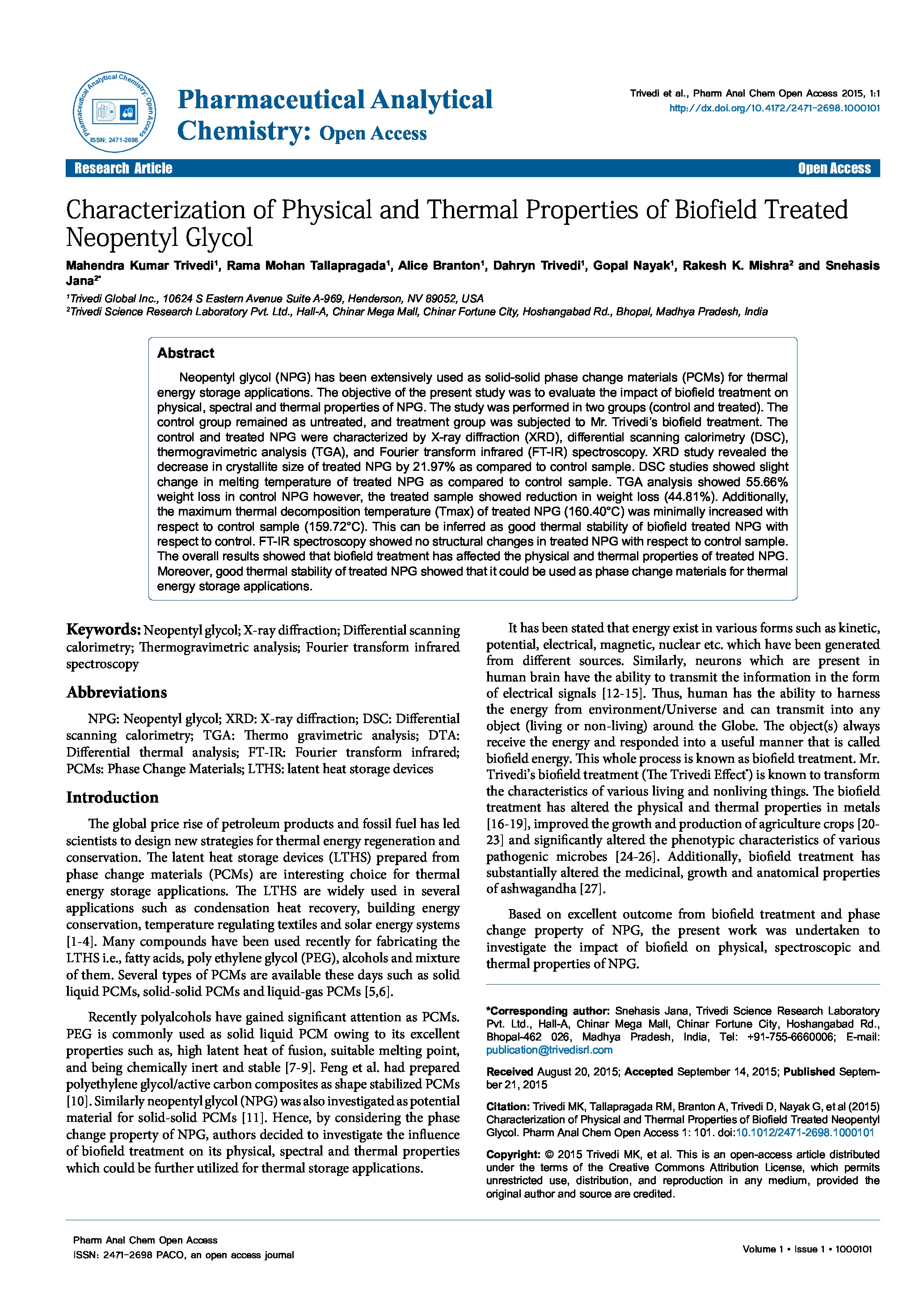Characterization of Physical and Thermal Properties of Biofield Treated Neopentyl Glycol
Affiliation
Trivedi Global Inc.; Trivedi Science Research Laboratory Pvt. Ltd.
Main category
Natural Sciences (Analytical Chemistry, Method Development (Chemistr)
Abstract
Neopentyl glycol (NPG) has been extensively used as solid-solid phase change materials (PCMs) for thermal energy storage applications. The objective of the present study was to evaluate the impact of biofield treatment on physical, spectral and thermal properties of NPG. The study was performed in two groups (control and treated). The control group remained as untreated, and treatment group was subjected to Mr. Trivedi’s biofield treatment. The control and treated NPG were characterized by X-ray diffraction (XRD), differential scanning calorimetry (DSC), thermogravimetric analysis (TGA), and Fourier transform infrared (FT-IR) spectroscopy. XRD study revealed the decrease in crystallite size of treated NPG by 21.97% as compared to control sample. DSC studies showed slight change in melting temperature of treated NPG as compared to control sample. TGA analysis showed 55.66% weight loss in control NPG however, the treated sample showed reduction in weight loss (44.81%). Additionally, the maximum thermal decomposition temperature (Tmax) of treated NPG (160.40°C) was minimally increased with respect to control sample (159.72°C). This can be inferred as good thermal stability of biofield treated NPG with respect to control. FT-IR spectroscopy showed no structural changes in treated NPG with respect to control sample. The overall results showed that biofield treatment has affected the physical and thermal properties of treated NPG. Moreover, good thermal stability of treated NPG showed that it could be used as phase change materials for thermal energy storage applications.
DOI
10.18147/smn.2017/paper:282
Do you have problems viewing the pdf-file? Download paper
here
If the paper contains inappropriate content, please
report the paper. You will be redirected to the landing page.
